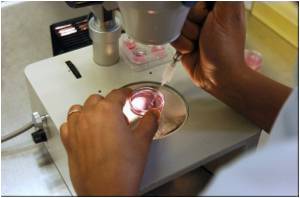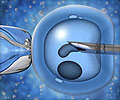
Doctors at Guy's and St Thomas' hospital, central London, are carrying out a larger trial to establish the overall efficacy of the technique with the hope of offering it routinely within three to five years.
It is thought that scratching the womb lining stimulates growth factors and repair mechanisms that allow the fertilised egg to embed more easily.
It takes only 15 minutes in clinic, can be carried out by trained nurses and uses simple equipment already in use. The procedure may add less than 100 pounds to the average 4,500-pound cost of a cycle of IVF treatment.
"Endometrial scratching uses simple, inexpensive equipment that most hospitals already have and which clinicians are already trained to use, so complications are rare," the Telegraph quoted Dr Tarek El-Toukhy, who led the review study, as saying.
"It's exciting that the chance of pregnancy could be doubled. The next step is to see if this applies to birth rates. About a third of IVF treatments result in a baby, so improving these odds would make a big difference to people trying to have children through IVF," El-Toukhy added.
Advertisement
There were no serious side effects reported and early signs are that the doubling in rates will be translated into birth rates.
Advertisement
The study has been published in Reproductive Biomedicine online.
Source-ANI












